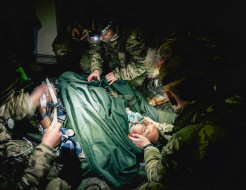
NZ Army medics hone their skills 5,000ft above sea level
16 April 2025
Unfortunately you are viewing this website on an outdated browser which does not support the necessary features for us to provide an adequate experience. Please switch to a modern browser such as latest version of Google Chrome, Mozilla Firefox, Apple Safari or Microsoft Edge.
Ngā mihi nui
When disaster strikes, putting life, health and property at risk, people’s lives are quickly turned upside-down. Communities, regions, or even whole countries can need help as quickly as possible.
Our Army is uniquely capable of responding quickly to unfolding events. We train to operate in tough conditions and a variety of environments. We are disciplined, well-coordinated and have personnel trained to operate in difficult situations, that can quickly deploy to a disaster site. The Army maintains experts who can assess the scale of the disaster situation and determine what to do with the people and equipment we have available.
These area some of our stories
Our other areas of work